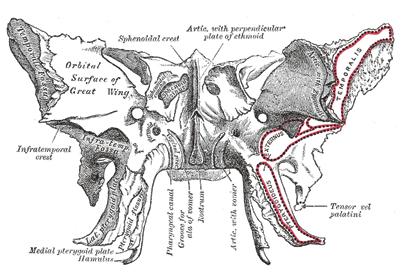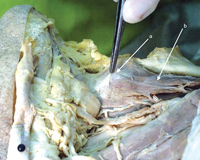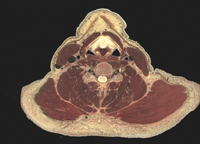
Features
Practice
Technique
Anatomical Resources on the Web
In my last article, The Internet for Massage Therapists, I outlined some practical ways to move around the internet. In this article, I introduce some of my favorite anatomy sites as a massage therapist and massage therapy educator.
September 24, 2009 By Doug Alexander BSc RMT
In my last article, The Internet for Massage Therapists, I outlined some practical ways to move around the internet. In this article, I introduce some of my favorite anatomy sites as a massage therapist and massage therapy educator.

Anatomy Sites
The internet helps us to think about and see things in new ways. This is perhaps nowhere more evident than in anatomy. The internet houses the classic anatomical text, Gray’s Anatomy and countless text, visual and audiovisual resources.
Here are some of my favorites!
• The complete Gray’s Anatomy online at: http://www.bartleby.com/107/. This is the 1918 edition (also the 20th edition), which just goes to show how long they had been at it, by the time 1918 came along. All the text and all the images are available on-line.
• The Virtual Hospital provides a comprehensive index to human anatomical variations at: http://www.vh.org/adult/provider/anatomy/AnatomicVariants/AnatomyHP.html. This index covers osteology and myology in comprehensive detail as well as the cardiovascular and neurological systems. This can be an excellent resource when you are trying to make sense of an extra little slip of muscle, or an absent muscle in a client!
• Anatomy tutorials at Loyola University in Chicago. These quizes are pretty comprehensive explorations of nerve, blood vessel, bones, muscle and innervation patterns. It is a click and learn paradise at: http://www.meddean.luc.edu/lumen/ MedEd/GrossAnatomy/learnem/learnit.htm
• Programmed Learning and Quizzing Modules for Anatomy Students at the University of Bristol’s Comparative Morphology Center at: http://137.222.110.150/calnet//Introanat/Introanat.htm. There are tutorials on equine, neuroanatomy, endocrinology and reproduction. Essentially a “Cole’s” notes to some key anatomy content with instant on-line quizzes.
On-line Archive Of Medical, Dental And Anatomical Images

Images:
• Bristol Biomedical Archive feature a huge on-line archive of medical, dental and anatomical images at: http://www.brisbio.ac.uk/. You can search the database in many different directions to find the images that you are looking for. Many of the images are clinical conditions with a short paragraph describing the situation. You cannot clip out the images to paste into power points unless you register. However, registration is free!
• Tufts University Cross Sectional Anatomy home page at: http://iris3.med.tufts.edu/medgross/gross.html is a
comprehensive resource of very clear images of sectional anatomy of all body parts, combined with video clips
that show rotation of the anatomical structures.
• Plastinated anatomical preparations are available at: http://www.univie.ac.at/anatomie2/gallery.html. Generally the images are not the best quality, but they sometimes have some useful points of view.
• E-Hand.com, at http://www.eatonhand.com, is much more than an electronic textbook of hand surgery – but it is that as well. There is an archive of more than 800 hand images, protocols for hand rehabilitation, links as well as all the surgery stuff.

Videos:
• Adelaide University provides videos of coronal, saffital and axial section journeys through the visible human male and female specimens at: http://www.dhpc. adelaide.edu.au/projects/vishuman/mpegs.html. These movies provide a flowing kinesthetic appreciation of the interconnectedness of myofascial planes as well as the relative positions of anatomical structures.
• Harvard University provides 3-dimensional videos of Intracranial Vascular Aantomy at: http://www.med.harvard.edu/AANLIB/vana.html. These very brief animations provide a 3-demensional representation of blood vessel structures within the head.
• If you want to see how muscles contract and unfold then you should visit Victor Ng’s thesis website. Victor has used precise anatomical explorations coupled with computer modelling to understand 3-dimensional changes in muscle morphology with contraction and relaxation. http://www.dgp.utoronto.ca/people/ victorng/phdthesis/intro.htm
• Doug Alexander is a Massage Therapist and Educator living in Ottawa and teaching at Algonquin College. His website address is: http://www.masterclass.ca.
• If you know of other useful sites, feel free to submit them to Massage Therapy Canada’s on-line directory of resources. Send to: info@massagetherapycanada.com.
Print this page